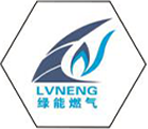
Nov . 15, 2024 20:53
Back to list
relief valves
Understanding Relief Valves Essential Safety Devices in Engineering Systems
Relief valves are critical components in various engineering systems, serving as essential safety devices that protect pressure vessels, pipelines, and other equipment from excess pressure. Their primary function is to prevent catastrophic failures due to overpressure conditions, which can lead to explosions, leaks, or even serious injuries. This article explores the functioning, types, applications, and significance of relief valves in industrial and commercial settings.
What Are Relief Valves?
Relief valves are automatic devices designed to open at a predetermined pressure level, allowing fluid or gas to escape when the pressure exceeds safe limits. By releasing excess pressure, these valves help to maintain safe operating conditions within a system. They are commonly found in boilers, steam systems, storage tanks, and various process equipment across industries like oil and gas, chemical manufacturing, and power generation.
Types of Relief Valves
There are several types of relief valves, each designed for specific applications and pressure management strategies
1. Pilot-Operated Relief Valves These valves use system pressure to open and close a pilot valve, which in turn controls the main valve. They are suitable for high-pressure applications and provide precise control over the system pressure.
2. Spring-Loaded Relief Valves The most common type, these valves rely on a spring mechanism to hold the valve closed until the pressure exceeds a specified limit. Once the threshold is reached, the valve opens, allowing the medium to escape.
3. Balanced Relief Valves These valves feature a unique design that equalizes the pressure on both sides of the valve disk, minimizing the effects of back pressure and ensuring reliable operation in varying conditions.
relief valves

4. Safety Valves vs. Relief Valves While the terms are often used interchangeably, safety valves typically operate faster and are used for gases, while relief valves are more frequently found in liquid systems where a gradual release is acceptable.
How Relief Valves Work
Relief valves function based on the principle of pressure differential. When the pressure within a system rises to a level that exceeds the set pressure of the valve, the force acting against the spring mechanism is overpowered, causing the valve to open. This allows the contents of the system to escape, effectively reducing pressure. The valve will remain open until the pressure drops below the set point, at which time the spring force will cause it to close, thereby sealing the system once again.
Applications of Relief Valves
Relief valves are used across a wide range of industries and applications. In the oil and gas sector, they help manage pressure in pipelines and storage tanks, preventing ruptures or explosions. In chemical processing, they are utilized in reactors and heat exchangers to handle steam and volatile substances safely. Manufacturing plants employ relief valves to maintain pressure in boilers and hydraulic systems, enhancing operational efficiency and safety.
Importance of Relief Valves
The importance of relief valves cannot be overstated. They are a first line of defense against overpressure scenarios, which can lead to dangerous situations. A properly functioning relief valve ensures compliance with safety regulations and standards, protecting both personnel and equipment. Routine maintenance and testing of relief valves are crucial to ensure their reliability, as neglected valves may fail to operate correctly in an emergency.
In conclusion, relief valves are indispensable components within various engineering systems, safeguarding against the dangers of excess pressure. Understanding their types, operation, and applications is vital for engineers and safety professionals alike. By ensuring the reliability and proper functioning of these valves, industries can enhance safety, protect assets, and maintain operational integrity.
Next:
Latest news
-
Safety Valve Spring-Loaded Design Overpressure ProtectionNewsJul.25,2025
-
Precision Voltage Regulator AC5 Accuracy Grade PerformanceNewsJul.25,2025
-
Natural Gas Pressure Regulating Skid Industrial Pipeline ApplicationsNewsJul.25,2025
-
Natural Gas Filter Stainless Steel Mesh Element DesignNewsJul.25,2025
-
Gas Pressure Regulator Valve Direct-Acting Spring-Loaded DesignNewsJul.25,2025
-
Decompression Equipment Multi-Stage Heat Exchange System DesignNewsJul.25,2025

